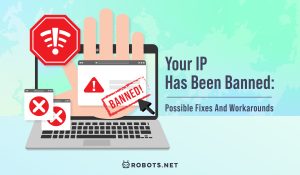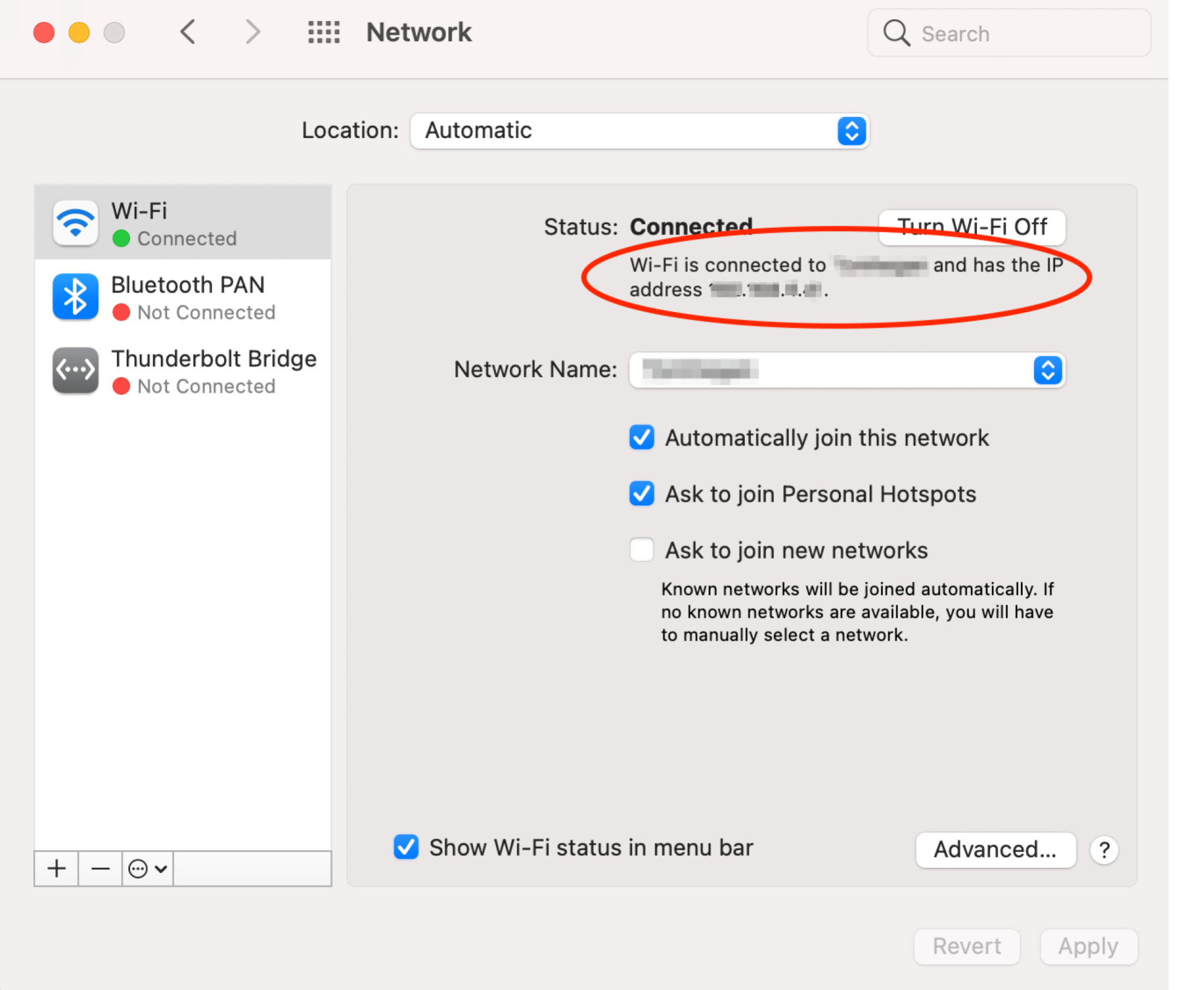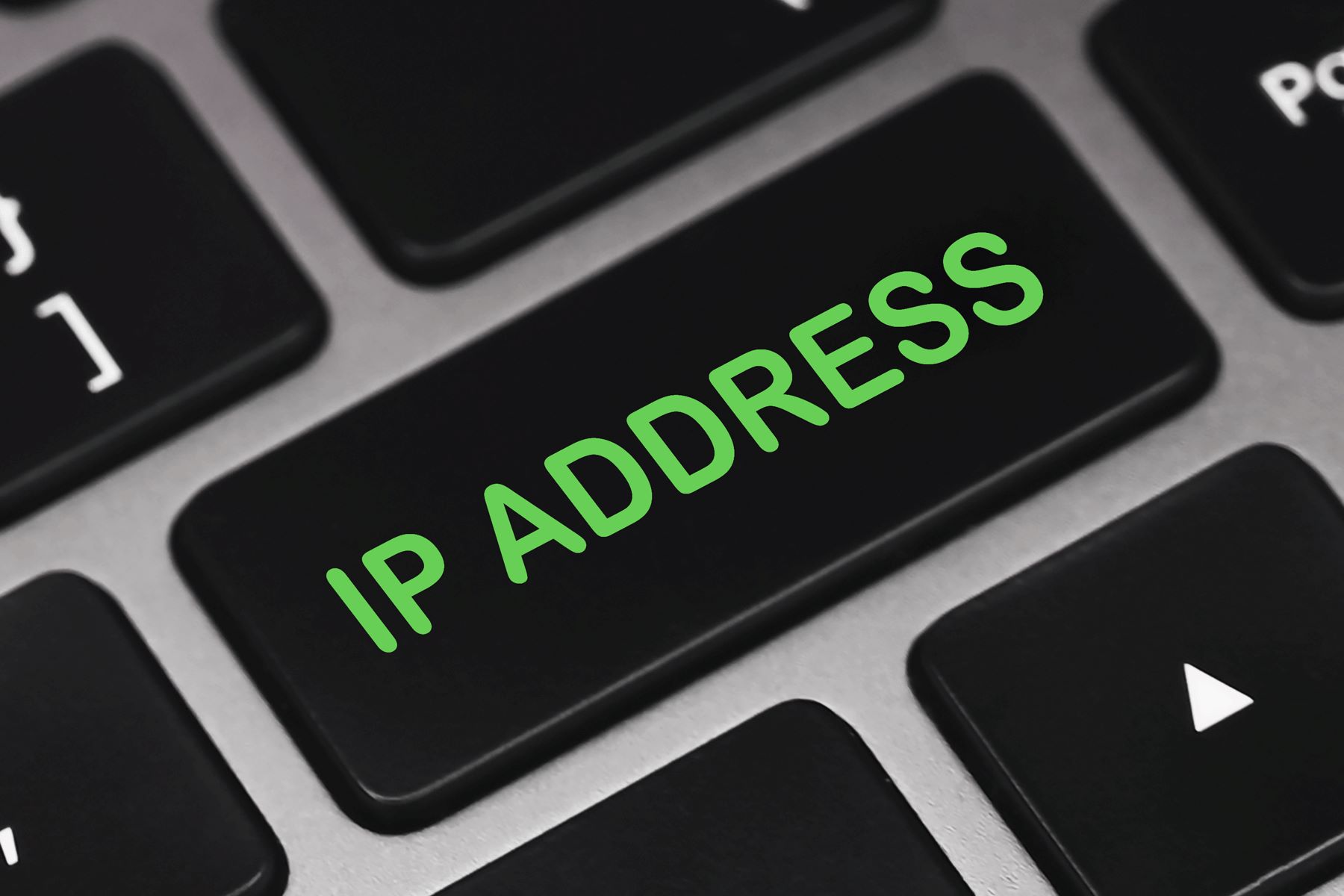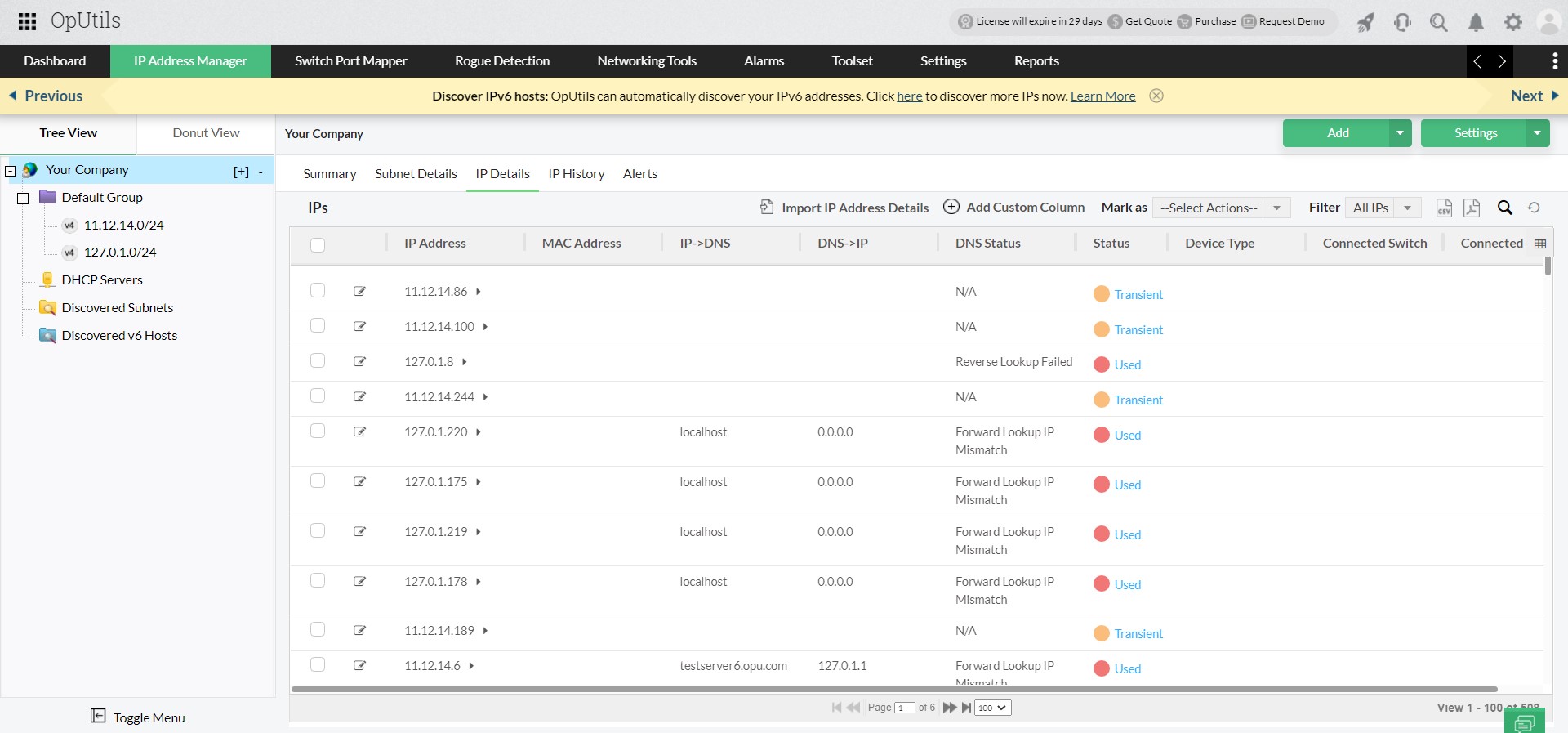Introduction
When it comes to online communication, email has become an essential tool for both personal and professional interactions. However, there may be instances where you need to find the IP address of an email sender. Whether it’s for security purposes, investigating potential spam or phishing attempts, or tracking down the source of harassment, being able to locate the IP address can provide valuable information.
Understanding how to find the IP address from an email can be a valuable skill, allowing you to identify the origin of the email and potentially reveal the sender’s location or Internet Service Provider (ISP). By analyzing the email headers or utilizing email tracking services, you can uncover valuable details that might help you in various situations.
In this article, we will explore different methods to find the IP address from an email. From analyzing email headers to contacting email service providers and even involving law enforcement if necessary, we will cover various strategies that can assist you in your quest for obtaining the IP address.
It is important to note that finding an IP address from an email might not always guarantee accurate results as individuals and organizations can use techniques to mask their IP addresses or use anonymous email services. However, by following the methods outlined in this article and keeping a few tips in mind, you can increase your chances of obtaining reliable and useful information.
So, whether you’re a curious individual wanting to trace the origin of an email or you’re dealing with a more serious situation that requires identifying the sender, understanding how to find the IP address can prove to be a valuable skill in the digital age.
Why would you want to find an IP address from an email?
There are several reasons why you might want to find the IP address from an email. Let’s explore some of the common scenarios where this information can be valuable:
1. Investigating spam or phishing attempts: Spam emails and phishing attempts are prevalent in today’s digital landscape. By finding the IP address of the sender, you can gather evidence and potentially report it to the appropriate authorities or take necessary actions to protect yourself and others from falling victim to these malicious activities.
2. Identifying the source of harassment or abusive messages: If you’re receiving unwanted or threatening emails, finding the IP address can help you pinpoint the source of harassment. This information can be crucial when filing complaints or seeking legal remedies, as it provides evidence of the sender’s online presence.
3. Verifying the authenticity of the email: In some cases, you may need to ensure that an email is genuine and not a spoofed or fraudulent message. By analyzing the email headers and tracking the IP address, you can verify the legitimacy of the email and protect yourself from potential scams or identity theft.
4. Tracing the origin of suspicious emails: If you receive emails containing suspicious attachments or links, knowing the IP address can help you trace the origin of the email. This information can aid in determining whether the email is coming from a legitimate source or if it poses a potential threat to your security.
5. Gathering evidence for legal purposes: In certain legal cases, identifying the IP address from an email can be crucial evidence. This can be relevant in cases of cyberbullying, harassment, fraud, or other criminal activities where tracing the source is necessary for investigations and legal proceedings.
By finding the IP address from an email, you gain valuable insights into the source and origin of the message. However, it’s important to use this information responsibly, following legal procedures and respecting privacy rights.
How to find the IP address from an email
There are several methods you can use to find the IP address from an email. Let’s explore some of the common techniques:
Method 1: Analyzing email headers: The email headers contain information about the email’s journey from the sender to your inbox. By accessing the email headers, you can often find the IP address of the sender. The process might vary depending on the email client you are using, but generally, you can locate the option to view the email headers within the settings or properties of the email. Look for the “Received” field in the headers, which usually includes the sender’s IP address.
Method 2: Using email tracking services: There are various email tracking services available that can assist in finding the IP address. These services allow you to track the journey of your email and provide detailed information, including the sender’s IP address. Simply forward the email to the tracking service, and they will provide you with the necessary details, usually including the IP address, location, and other relevant information.
Method 3: Contacting the email service provider: If the previous methods do not yield satisfactory results, you can consider contacting the email service provider. Reach out to their customer support and explain your situation, providing them with the necessary details such as the email address and any relevant information. They may be able to assist you in obtaining the IP address or provide guidance on the appropriate steps to take.
Method 4: Legal procedures and law enforcement: In cases where it becomes necessary to involve law enforcement or pursue legal action, they may have the means to obtain the IP address. It’s important to consult with legal professionals and follow the appropriate legal procedures in such situations. They can guide you on the necessary steps and help you gather the required evidence to trace the IP address.
Remember, while these methods can be effective in finding the IP address from an email, they are not foolproof. Individuals and organizations can employ techniques to mask their IP address or use anonymous email services. Consequently, the results may not always provide the desired information. It’s important to use these methods responsibly and respect privacy rights, following legal procedures when necessary.
Method 1: Analyzing email headers
One of the primary methods to find the IP address from an email is by analyzing the email headers. Email headers contain details about the email’s journey from the sender to your inbox, including information about the servers it passed through. By accessing the email headers, you can often uncover the IP address of the email sender.
The process for analyzing email headers may vary depending on the email client or service you are using. Here’s a general guide on how to locate and review email headers:
- Open the email you want to analyze in your email client or web-based email service.
- Look for a menu or option that allows you to view the email headers. This option is usually located in the email settings, properties, or header information.
- Once you have accessed the email headers, search for the “Received” field. This field typically contains a series of IP addresses separated by commas or semicolons.
- Start from the bottom of the list and work your way up, as the topmost entry is usually the IP address of the server that delivered the email to your inbox.
- Identify the sender’s IP address by locating the IP listed in the “Received” field. This IP address corresponds to the server or device that sent the email.
It’s important to note that analyzing email headers may require technical knowledge, and the process can be more complex for some email clients or services. If you’re unsure how to access and interpret the email headers, consider searching for specific instructions for your email client or ask for assistance from knowledgeable individuals.
While analyzing email headers is a useful method for finding IP addresses, it’s important to keep in mind that the IP address you obtain might not be the actual sender’s IP address. Some individuals or organizations may use techniques to hide or mask their IP address. Additionally, the IP address you find may belong to a server or intermediate system along the email’s route rather than the sender’s personal device.
Nevertheless, analyzing email headers can provide valuable insights and is often the first step in determining the origin of an email. By understanding this method and the information contained in the headers, you can improve your chances of finding the IP address and gathering relevant details about the email sender.
Method 2: Using email tracking services
Another effective method to find the IP address from an email is by utilizing email tracking services. These services specialize in tracking the journey of your emails and provide detailed insights, including the IP address of the sender. By forwarding the email to an email tracking service, you can access valuable information that can help you trace the origin of the email.
Here’s how you can use email tracking services to find the IP address:
- Select a reliable email tracking service that suits your needs. There are several options available, both free and paid, with varying features and capabilities.
- Sign up for an account on the chosen email tracking service, if required. Follow the provided instructions to create your account.
- Once you have your account set up, compose a new email in your preferred email client or service.
- Copy and paste the content of the suspicious email into the body of the new email, or alternatively, attach the suspicious email as an attachment to the new email.
- In the “To” field of the new email, enter the email address provided by the email tracking service. This address is usually unique to your account on the tracking service.
- Send the email. The email tracking service will receive your forwarded email and begin analyzing it.
- Check your email tracking service account for the results. The service will typically provide information about the IP address, location, device type, and other relevant details associated with the sender of the original email.
Email tracking services can offer valuable insights beyond just the IP address. They can often provide information on when the email was opened, the number of times it was viewed, and even the recipient’s geographic location. These additional details can be useful in further understanding the context and behavior surrounding the email.
Keep in mind that while email tracking services can be effective, they do have limitations. Some email clients or services may block tracking pixels or other tracking mechanisms, which can affect the tracking accuracy. Additionally, the success of using email tracking services relies on the recipient opening the tracked email. If the recipient does not open the email, the information gathered by the tracking service may be limited.
Nonetheless, using email tracking services can provide valuable insights and assist in tracing the origin of an email. By leveraging these services, you can uncover the IP address and other relevant information that can help in your investigation process.
Method 3: Contacting the email service provider
If the previous methods for finding the IP address from an email have not yielded satisfactory results, you can consider reaching out to the email service provider. The email service provider may have access to additional information and resources that can assist you in obtaining the IP address or guiding you through the appropriate steps.
Here’s how you can contact the email service provider to seek assistance:
- Identify the email service provider associated with the sender’s email address. This information can often be found by examining the email address, such as identifying the domain name in the email (e.g., @gmail.com, @yahoo.com, etc.).
- Visit the website of the email service provider and look for their customer support or contact page. They should provide contact information, such as a phone number, email address, or online form to submit inquiries.
- Provide the necessary details in your communication with the email service provider. Include information such as the email address of the sender, the email headers if available, and any additional context or concerns you have.
- Explain your situation and state that you are trying to find the IP address of the email sender. Request their assistance or guidance in obtaining this information and provide any documentation or evidence that supports your request.
- Follow any instructions provided by the email service provider and maintain ongoing communication with their support team. They may require additional information or ask for clarification to better assist you.
It’s important to keep in mind that not all email service providers may assist in providing the IP address willingly. They have their own policies and procedures in place to protect user privacy. However, depending on the circumstances and the nature of your request, they may be able to help or provide guidance on how to proceed.
When contacting the email service provider, remain patient and respectful. Remember to clearly explain why you need the IP address and provide any supporting evidence or reasons. Understand that their response may vary, and they may require valid legal justifications or involvement from law enforcement before divulging the IP address.
By contacting the email service provider, you increase your chances of obtaining the IP address from the email sender. They can provide insights, offer guidance, or redirect you to the appropriate channels for further assistance.
Method 4: Legal procedures and law enforcement
In certain situations where it becomes necessary to trace the IP address from an email, legal procedures and involvement from law enforcement may be required. This method should be pursued when dealing with more serious offenses or cases where legal authorities are needed to obtain the necessary information beyond the scope of regular methods.
Here are the general steps to follow when considering legal procedures and involving law enforcement:
- Consult with legal professionals: Seek the advice of legal experts to understand the process and requirements for obtaining the IP address through legal means. They can guide you on relevant laws, procedures, and best practices specific to your jurisdiction.
- Document and gather evidence: Compile all relevant evidence you have, including the email in question, any email headers, and any other correspondence or details that can support your case. Make sure to keep copies of all materials.
- Report the incident: Contact the appropriate law enforcement agency or file a report stating your situation and providing the evidence you have gathered. They may guide you on the next steps and actions required to proceed legally.
- Cooperate with law enforcement: Be prepared to work closely with law enforcement officials, providing any additional information or assistance they request. They may need your cooperation to initiate legal proceedings and obtain the necessary court orders to trace the IP address.
- Follow established legal procedures: Depending on your jurisdiction, there may be specific legal procedures and protocols that need to be followed in order to obtain the IP address. This may involve obtaining subpoenas or search warrants to compel email service providers or internet service providers to disclose the relevant information.
- Respect privacy rights and legal limitations: It’s important to conduct these actions within the bounds of the law and respect privacy rights. Ensure that you adhere to the prescribed legal procedures and obtain proper authorization before proceeding with any actions.
Tracing the IP address through legal procedures requires professional guidance and the involvement of law enforcement. They have the authority and expertise to navigate the legal system, obtain necessary court orders, and work with relevant service providers to gather the required information.
Keep in mind that the process can be time-consuming and may vary depending on the circumstances and legal requirements of your jurisdiction. Patience and cooperation with law enforcement officials are essential throughout the process.
Consulting legal professionals and involving law enforcement ensures that you are proceeding legally and within the confines of the law while seeking to identify the IP address from an email sender.
Tips for obtaining accurate and reliable results
Obtaining accurate and reliable results when trying to find the IP address from an email can be challenging. However, by following these tips, you can improve your chances of achieving successful outcomes:
- Verify the email headers: Double-check that you are examining the correct email headers. Sometimes, email clients may display multiple sets of headers, so make sure you are analyzing the most recent or relevant ones.
- Research the email client: Different email clients or services may have their own variations in displaying headers or limitations on what information is accessible. Before starting the analysis, familiarize yourself with the specific functionalities and limitations of the email client you are using.
- Use multiple email tracking services: If you decide to utilize email tracking services, try using multiple reputable services. This can help cross-reference the results and increase the chances of obtaining accurate and consistent information.
- Keep records: Keep a record of all the information you gather, including email headers, tracking results, and communication with email service providers or law enforcement. This record can serve as valuable evidence or documentation if you need to escalate the issue or seek legal remedies.
- Consider legal advice early: If you anticipate that the process might involve legal procedures or law enforcement, seek legal advice early in the process. Legal professionals can guide you on the proper steps to take and help you navigate the legal landscape effectively.
- Respect privacy and follow legal procedures: It’s crucial to respect privacy rights and adhere to the legal procedures specific to your jurisdiction. Acting in accordance with the law ensures that your actions remain ethical and legal, and it helps safeguard the integrity of the process.
Remember, finding an IP address from an email does not guarantee absolute accuracy or provide an irrefutable source of evidence. IP addresses can be manipulated or masked, and other factors may limit the reliability of the results. Additionally, it’s essential to approach the process responsibly, ensuring that your actions align with legal and ethical guidelines.
By applying these tips and maintaining a cautious approach, you can optimize your efforts to obtain accurate and reliable results while maintaining the utmost respect for privacy and adhering to legal requirements.
Conclusion
Being able to find the IP address from an email can be a valuable skill, allowing you to trace the origin of the message and gather valuable information. Whether it’s for investigating spam or phishing attempts, identifying the source of harassment, or verifying the authenticity of an email, understanding how to find the IP address can be beneficial in various situations.
We explored several methods for finding the IP address from an email, including analyzing email headers, utilizing email tracking services, contacting the email service provider, and involving legal procedures and law enforcement. Each method has its own advantages and limitations, and the success of finding the IP address may vary depending on the circumstances and the cooperation of the involved parties.
It’s important to approach the process responsibly, respecting privacy rights and adhering to legal procedures in obtaining the IP address. It’s also vital to understand that finding the IP address does not guarantee absolute accuracy or provide an irrefutable source of evidence, as IP addresses can be masked or manipulated.
By following the tips outlined in this article, such as verifying email headers, using multiple tracking services, and seeking legal advice when necessary, you can improve your chances of obtaining accurate and reliable results.
Ultimately, the ability to find the IP address from an email can be a useful tool for individuals and organizations, providing valuable insights and assisting in various scenarios. However, it’s essential to use this information responsibly and within the confines of the law, respecting privacy rights and following legal procedures.
Whether you’re tracing the origin of suspicious emails, investigating potential threats, or seeking justice in cases of harassment, understanding how to find the IP address can empower you with valuable information to protect yourself and take the necessary actions.

























